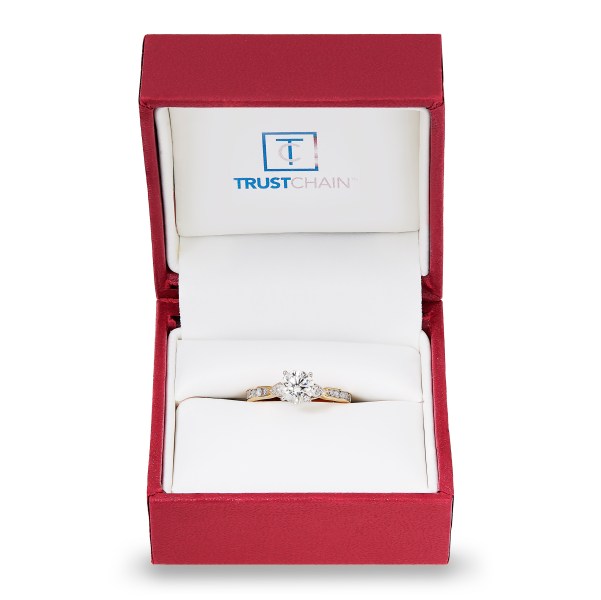Blockchain has come in handy as a way to trace the origin of objects transparently and securely. That’s why IBM has formed a consortium of gold and diamond industry companies to trace the entire supply chain for jewelry, from the mines to the stores.
IBM said the TrustChain Initiative will use blockchain to trace the provenance of finished pieces of jewelry and provide increased transparency across the supply chain.
Asahi Refining (precious metals refiner), Helzberg Diamonds (U.S. jewelry retailer), LeachGarner (precious metals supplier), The Richline Group (global jewelry manufacturer), and UL (independent, third-party verification), are launching the TrustChain Initiative, powered by the IBM Blockchain Platform and delivered via the IBM Cloud.
TrustChain has already been used to track six styles of diamond and gold engagement rings. In the future, consumers will be able to view information about the source and movement of their jewelry. TrustChain jewelry is expected to be accessible to consumers in stores by the end of 2018.
June 5th: The AI Audit in NYC
Join us next week in NYC to engage with top executive leaders, delving into strategies for auditing AI models to ensure fairness, optimal performance, and ethical compliance across diverse organizations. Secure your attendance for this exclusive invite-only event.
“We’re excited about this,” said Jason Kelley, general manager of blockchain services at IBM, in an interview with VentureBeat. “It’s not just one of these players. A miner. A refiner. A manufacturer. It’s each one of them. Now you have them working together and sharing data in a common blockchain for the enterprise.”
The TrustChain Initiative tracks and authenticates diamonds and precious metals through every stage in the process of becoming finished jewelry. It includes product and process verification, and third-party oversight.
The collaboration’s goal is to instill trust in the origin and ethical sourcing of jewelry by bringing together a community of responsible and ethical organizations across the complex and multi-tiered jewelry supply chain. That’s important in an era of “blood diamonds,” where the stones are mined in war zones.
“The question is what are we getting out of this?” Kelley said. “What got all of this excitement going is each one of these players coming together for a higher level of transparency, visibility, and trust for their consumer. Seventy-three percent of millennials see this as a market need.”

Above: Pictured is a gold and diamond engagement ring that was initially tracked on the blockchain network and will be made accessible to consumers in stores later this year.
Built by IBM Services on open source technology and based on IBM Blockchain and the Hyperledger Project, TrustChain uses distributed ledger technology that establishes a shared, immutable record of all the transactions that take place within a network and then enables permissioned parties access to trusted data in real time.
“It takes all of the parties to validate a given transaction,” Kelley said. “We accelerate the process in going from paper documents to a digital record.”
By applying the technology to digitize processes, a new form of command and consent is introduced into the flow of information, empowering those in the blockchain network to collaborate and establish a single shared view of information without compromising detail, privacy, or confidentiality.
For consumers, that means you can get a trusted product with documented authenticity guaranteeing quality and social and environmental responsibility. The entire jewelry ecosystem — from miners to manufacturers, wholesale suppliers, and retailers — is on a single digital platform.
“This initiative is important for our industry as we seek to raise the collective responsibility and provenance practices to new heights. TrustChain is the first blockchain of its kind within our industry, designed as a solution that marries IBM’s leading blockchain technology with responsible sourcing, verification, and governance by third-party organizations, led by UL as the administrator,” said Mark Hanna, Richline Group’s chief marketing officer, in a statement.
IBM is doing something similar with Walmart in food supply chains. Where it used to take seven days to verify something in the food chain, it can now be done in two seconds, Kelley said.
“This is for industries that have trust and visibility as a priority,” he said.

